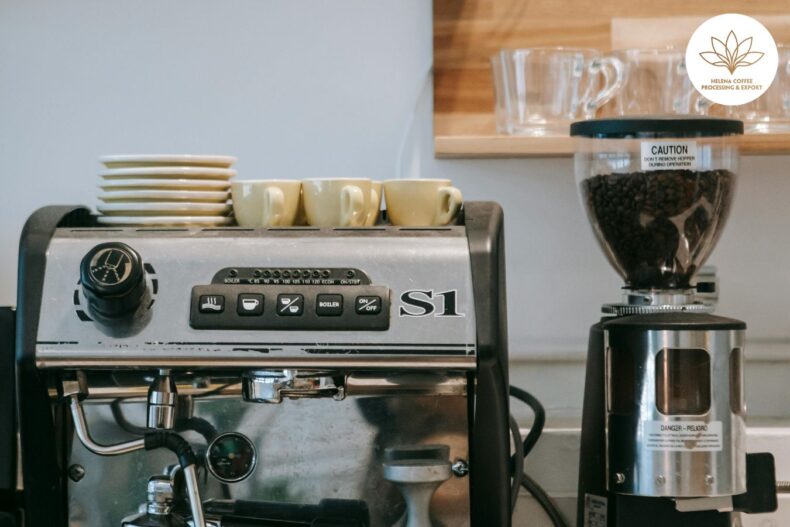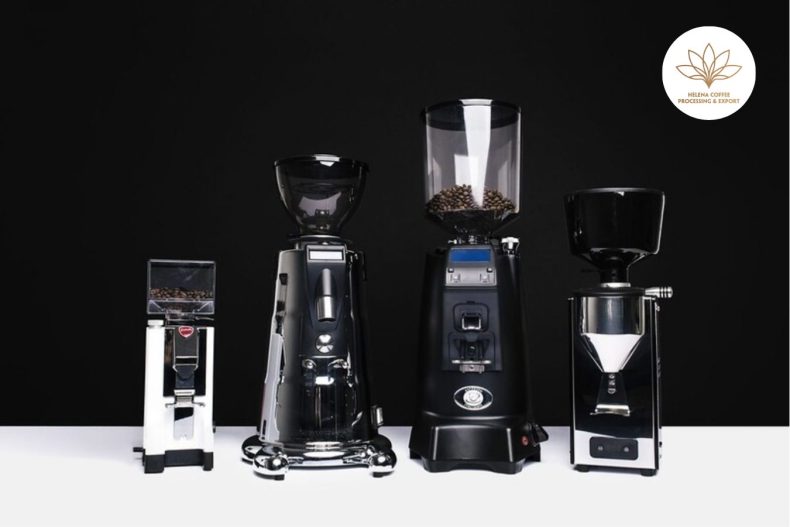
Hand Grinders: The intricacies of coffee brewing are a subject of fascination for many, and one of the key elements in this process is the humble coffee grinder. More specifically, the type of burrs utilised in hand-operated coffee grinders is of profound significance when it comes to the quality of extraction and the resulting flavour profiles that one can achieve.
Though it may seem like a minor component at a glance, the burrs used in a coffee grinder have a profound impact on the taste and quality of the coffee brewed. They determine the consistency and size of the coffee particles, which in turn influence how the water interacts with the coffee during the brewing process. A seemingly small variation in the design or material of the burrs can result in a noticeable difference in the final cup of coffee.
To gain a richer understanding of this subject, I had the opportunity to engage in an enlightening conversation with an expert in the field. My source was Giulia Bagato, who serves as the Marketing Manager at Fiorenzato, a company well-known for its innovation and quality in the field of coffee equipment. Giulia was kind enough to share her extensive knowledge and professional experience, shedding light on the pivotal role of burrs in the coffee grinding process.
The knowledge I gained from our conversation is invaluable for anyone seeking to understand the nuances of coffee brewing. It’s a testament to the fact that the art of brewing a perfect cup of coffee is a complex process, involving a careful balance of various elements. Using the right kind of burrs in a coffee grinder is just one of these elements, but it’s importance cannot be overstated.
So, if you’re interested in delving deeper into the world of coffee brewing and understanding how each component contributes to that perfect cup, I encourage you to continue reading. The insights shared by Giulia Bagato are sure to enrich your knowledge and appreciation of this beloved beverage.
The Evolution of Manual Coffee Grinders
The trajectory of manual coffee grinders reflects a remarkable journey from their inception to contemporary designs. Before the 1600s, the prevalent method for grinding coffee beans involved laboriously using a pestle and mortar. However, hand grinders: this approach proved cumbersome and time-consuming, prompting the adoption of spice grinders for a more efficient and expedited grinding process.
In the late 17th century, English inventor Nicholas Book is credited with pioneering the modern hand grinder. Hand grinders: This apparatus featured a grinding chamber positioned atop a wooden box, with a crank lever facilitating the grinding of beans and the dispensing of ground coffee into a drawer.
Book’s innovation garnered widespread acclaim, inspiring other companies to develop similar models. Notably, French car manufacturer Peugeot ventured into manual coffee grinder production, a legacy that endures to this day.
However, as convenience became paramount for coffee consumers in the 19th and 20th centuries, the popularity of hand grinders gradually waned. Hand grinders: “Manual coffee grinders have a rich history spanning centuries when home coffee grinding was commonplace,” explains Giulia. “Yet, this tradition began to fade as the convenience of pre-ground coffee gained traction.”
Crafting specialty coffee with hand grinders
As specialty coffee gains momentum in recent decades, there’s a heightened emphasis on the artistry and expertise involved in coffee preparation, alongside a preference for freshly roasted and brewed coffee. Consequently, the market has witnessed a proliferation of premium hand grinders.
“Today’s manual coffee grinders represent a significant departure from their historical counterparts,” explains Giulia. “They boast refined mechanical designs, offering increased precision, compactness, and user-friendliness.”
Different types of coffee grinder burrs
Electric grinders typically utilize either conical or flat burrs, depending on the manufacturer’s specifications. However, hand grinders: most hand grinders come equipped with conical burrs as the default option. Here are some notable distinctions between these two types of burrs:
Conical burrs: Consist of one cone-shaped burr nestled inside another, which is ring-shaped. This configuration results in vertical grinding, with gravity playing a significant role.
Flat burrs: Comprise two ring-shaped burrs positioned on top of each other. The gap between the burrs determines the grind size, leading to horizontal grinding.
The shape of burrs profoundly influences grind size and particle distribution. Conical burrs yield a bimodal particle size distribution, generating a mix of smaller and larger particles. In contrast, flat burrs produce a unimodal particle size distribution, resulting in more uniform ground coffee particles. Hand grinders: This promotes an even extraction process and allows for greater experimentation with grind size and its impact on flavor profiles.
Materials Utilized for hand grinder burrs
In hand grinders, burrs traditionally come in three main materials:
- Ceramic
- Plastic
- Steel
Ceramic and plastic are commonly employed in lower-priced hand grinders. While these options offer affordability, they tend to lose sharpness more rapidly compared to steel burrs. Hand grinders: As burrs dull over time, the uniformity of grind size distribution and subsequent extraction can be compromised.
Furthermore, ceramic burrs, in particular, are fragile and prone to breakage, adding another layer of consideration. Steel burrs, on the other hand, are predominant in higher-end hand grinders and maintain their sharpness for extended periods. They deliver more consistent grinding outcomes.
However, steel burrs have a tendency to retain more heat than ceramic or plastic counterparts, potentially impacting extraction quality. Hand grinders: To mitigate heat retention, grinder manufacturers often utilize various grades of steel. For instance, Fiorenzato’s Pietro manual coffee grinder is equipped with Bohler M340 steel flat burrs coated with Dark-T®. This coating reduces friction, minimizing heat retention during grinding. Consequently, fewer flavor and aroma compounds are lost, resulting in a more nuanced coffee experience.
Advancements in hand grinder burr technology
With a growing interest in crafting café-quality beverages at home, there has been a surge in demand for higher-quality hand grinders in recent years.
“Manual grinders are undeniably one of the simplest and most cost-effective tools for achieving exceptional coffee at home,” notes Giulia.
In addition to improvements in design and construction quality, there have been notable changes in the types of burrs used in hand coffee grinders. One such innovation is exemplified by Fiorenzato’s Pietro manual grinder, featuring vertically-aligned steel flat burrs.
Hand grinders: “Fiorenzato faced the challenge of developing a hand grinder with enhanced features,” Giulia explains. “We opted for vertically-aligned flat burrs, departing from the conventional use of conical burrs found in most other brands.”
“We then conducted experiments to determine burr geometries suitable for operating at lower rotations per minute,” she elaborates. Hand grinders: “This resulted in the Pietro grinder being ergonomically designed, making coffee grinding a more effortless task.”


